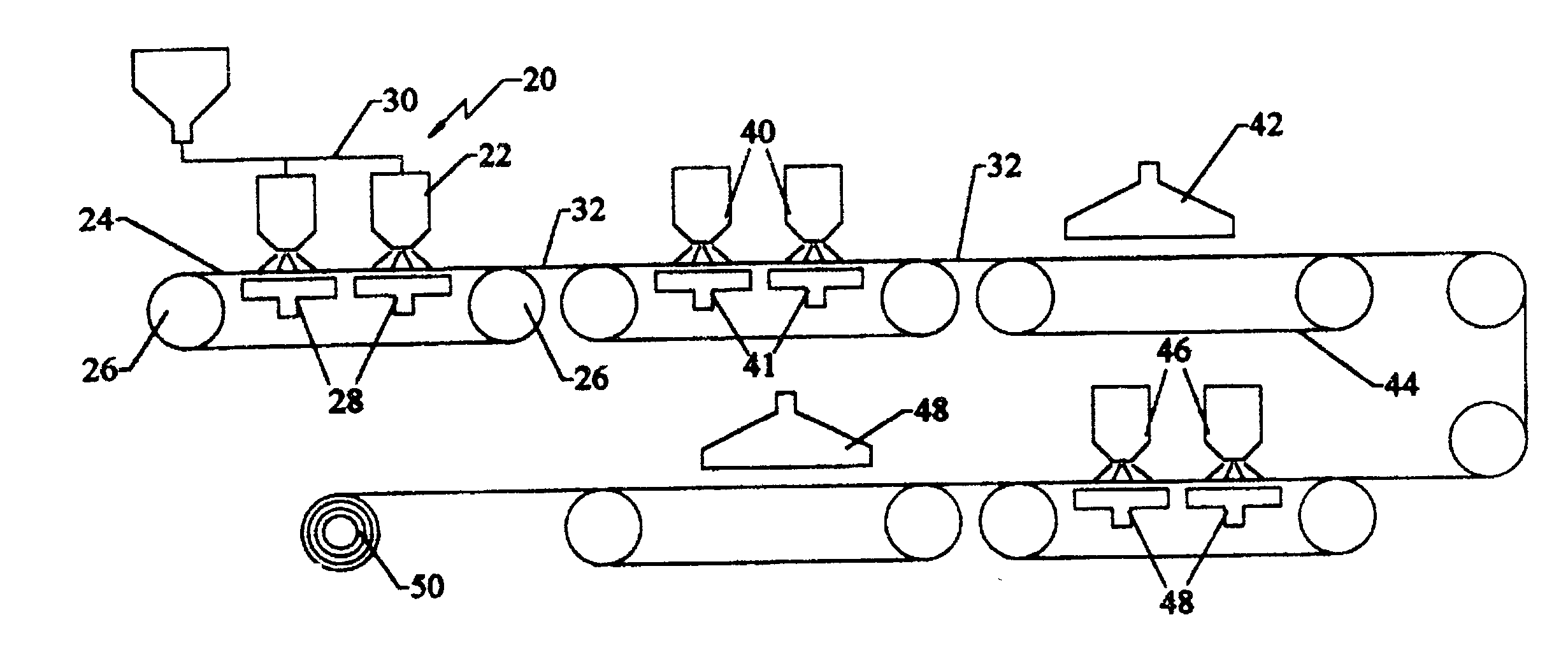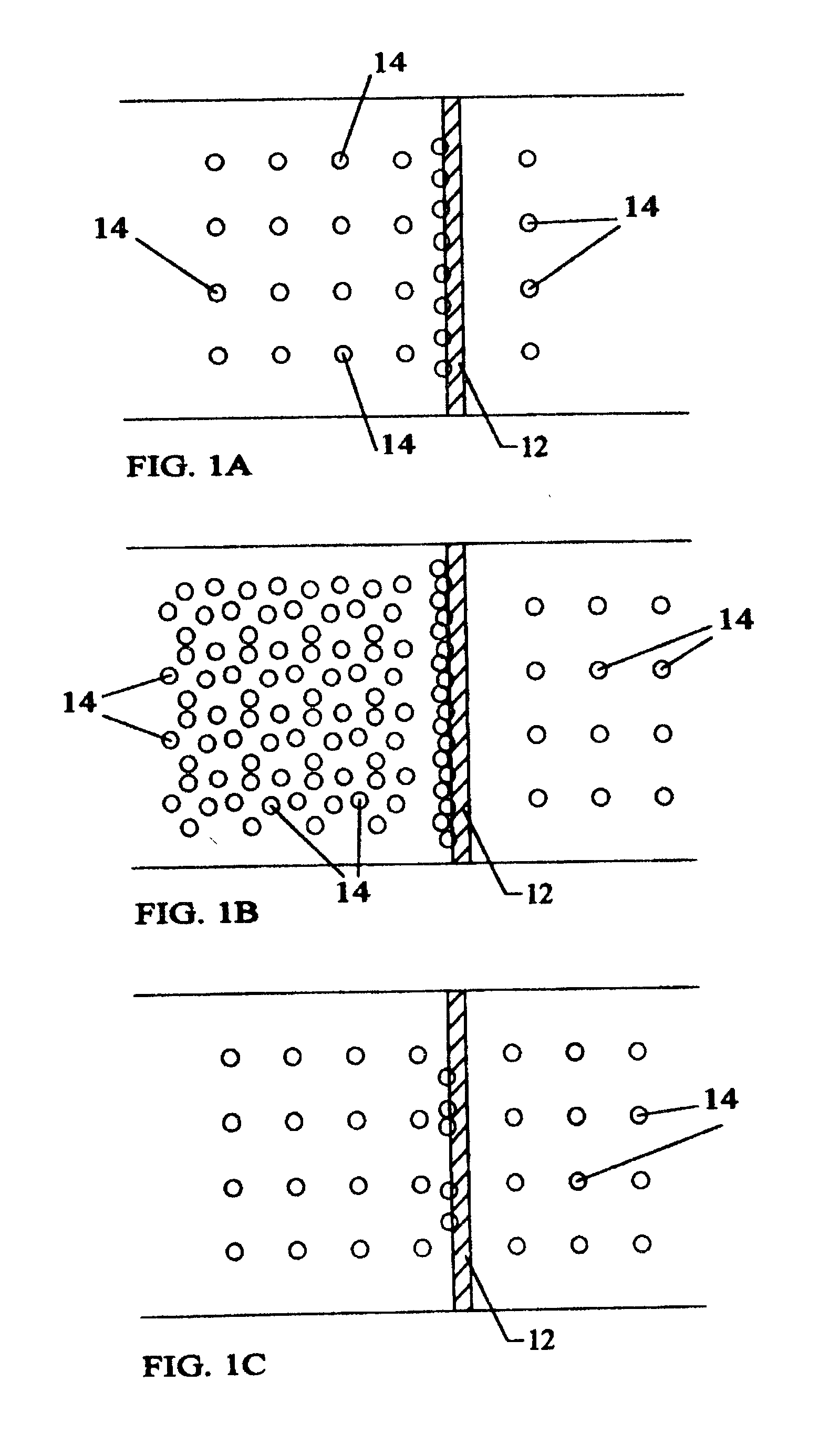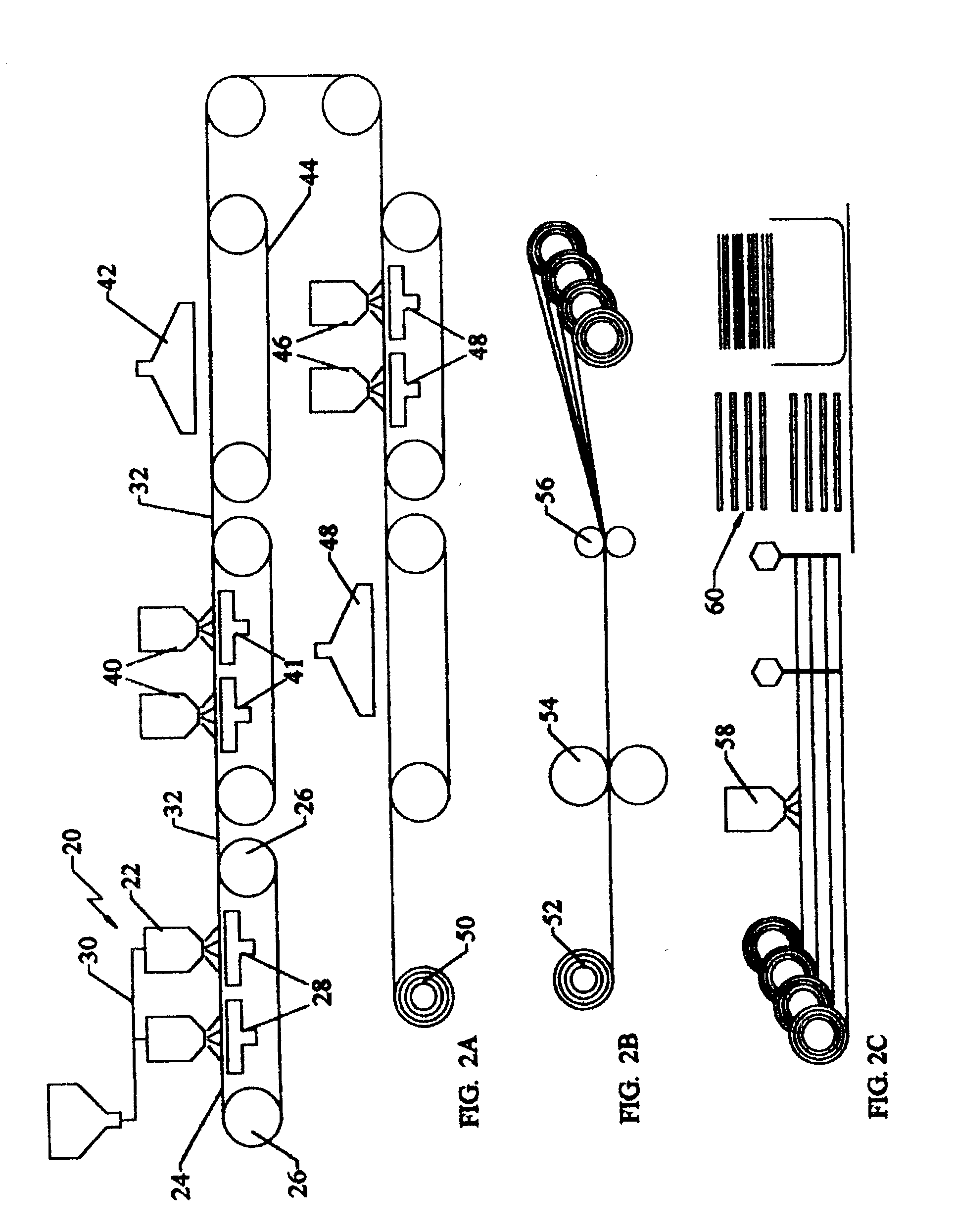Moist wipe and method of making same
a technology of moist wipes and wipes, applied in the field of moist wipes and making same, can solve the problems of reducing the effectiveness nascent webs lack integrity and therefore need to be consolidated or stabilized, and the amount of cationic functional ingredients is reduced
- Summary
- Abstract
- Description
- Claims
- Application Information
AI Technical Summary
Benefits of technology
Problems solved by technology
Method used
Image
Examples
example 2
[0036] A nonwoven fabric or web containing a binder with a non-ionic surfactant is made using the airlaid process as described in Example 1, except the binder and surfactant used are non-ionic so as not to interfere with the cationic functional agent in the liquid load phase when converted into a moist wipe. The non-ionic binder is also an EVA, and the non-ionic surfactant is TDA-8 tridecyl alcohol ethoxylate from BASF. This fabric is embossed with the Quilted Northern.RTM. Double Hearts pattern.
[0037] The airlaid fabric exhibited a basis weight of 41 to 48 pounds / ream, caliper of 100 to 120 mils / 4 sheets, machine direction dry tensile strength of 2000 to 3000 grams / 3 inches, cross-direction wet tensile of 700 to 1100 grams / 3 inches, and absorbency rate between 2 and 4 seconds. The airlaid fabric exhibited a surface anionic charge of 1.19 milli-equivalents / Kg as measured by the method described above.
example 3
[0038] A nonwoven airlaid fabric is made containing a binder with non-ionic surfactant plus 0.33 wt. % active Reputex-20.RTM. poly(hexamethylene biguanide) cationic polymer to further reduce the surface anionic charge. In this example, the process is the same as Examples 1 and 2, except the poly(hexamethylene biguanide) is added to the same non-ionic binder / non-ionic surfactant as in Example 2.
[0039] The airlaid fabric exhibited a basis weight of 41 to 48 pounds / ream, caliper of 100 to 120 mils / 4 sheets, machine direction dry tensile strength of 2000 to 3000 grams / 3 inches, cross-direction wet tensile of 700 to 1100 grams / 3 inches, an absorbency rate between 2 and 4 seconds, and a surface anionic charge of 1.11 milli-equivalents / Kg.
[0040] For each of the preceding Examples 1-3, and the calculated anionic surface charge, as well as the absorbance of the retained methyl blue, are set forth in Table II below.
2TABLE II Measurement of Anionic Surface Charge Calculated Solution Anionic Ex...
example 4
[0047] A stack of each airlaid fabric (examples 1, 2, and 3, each cut to 9 cm by 14 cm sheets) weighing 25.0-grams was placed in a polyethylene plastic tub. A 75.0-gram portion of 0.118 weight % cetyl trimethyl ammonium bromide in 95 / 5 (volume / volume) water / ethanol was poured on top of the dry airlaid fabric for each of the three grades. Each tub was sealed, shaken, stored, and analyzed as discussed above.
PUM
| Property | Measurement | Unit |
|---|---|---|
| weight percent | aaaaa | aaaaa |
| basis weight | aaaaa | aaaaa |
| temperature | aaaaa | aaaaa |
Abstract
Description
Claims
Application Information
 Login to View More
Login to View More - R&D
- Intellectual Property
- Life Sciences
- Materials
- Tech Scout
- Unparalleled Data Quality
- Higher Quality Content
- 60% Fewer Hallucinations
Browse by: Latest US Patents, China's latest patents, Technical Efficacy Thesaurus, Application Domain, Technology Topic, Popular Technical Reports.
© 2025 PatSnap. All rights reserved.Legal|Privacy policy|Modern Slavery Act Transparency Statement|Sitemap|About US| Contact US: help@patsnap.com



